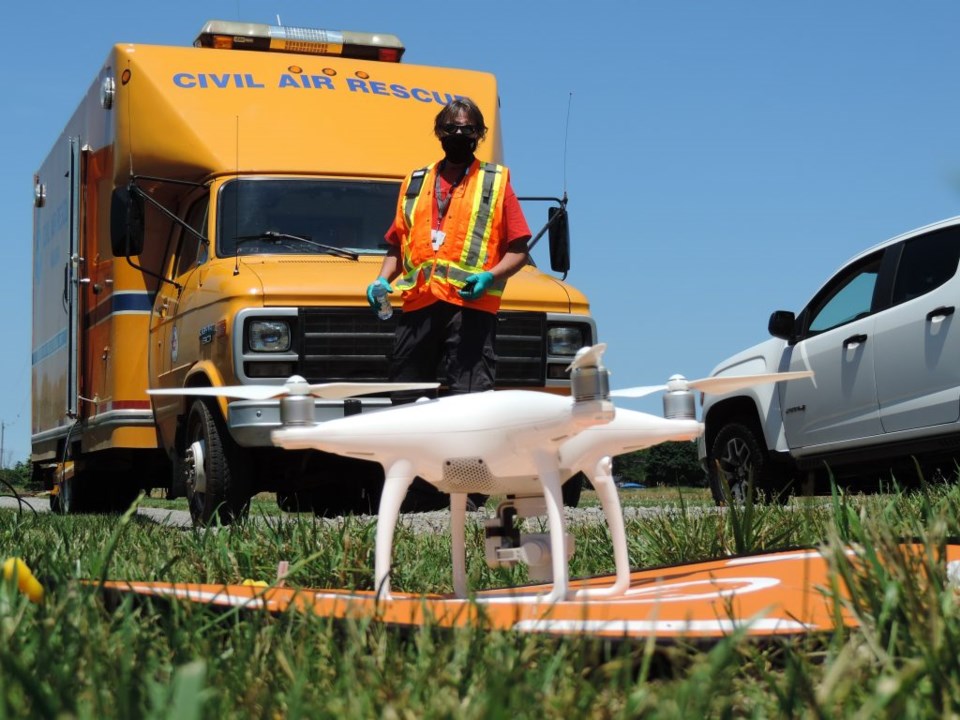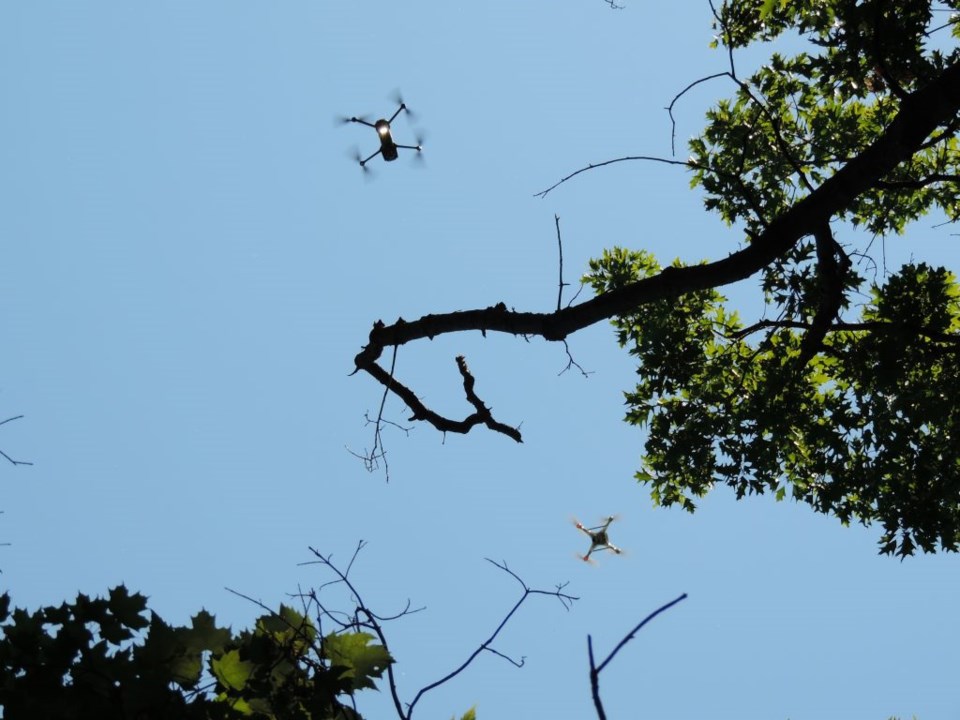
Based at Niagara District Airport, the Civil Air Search And Rescue Association (CASARA) Niagara has been at the forefront of developing operating procedures for the use of drones for search missions.
A drone is technically classified as a remotely piloted aircraft system and as such is federally regulated. As with general aviation piloting abilities, there are additional skills involved in flying a drone for search and rescue.

Gord Tessier, CASARA pilot, and drone pilot, has been involved in a number of trial operations to develop standards of using drones for search and rescue. Tessier programs the drone to fly a search pattern, while taking video which is transmitted to a computer monitor. In addition to the pilot, a spotter watches the monitor for the search object, while another visual observer watches the drone from a different position, should the pilot lose visual sight of the drone.
The drone flown by Tessier is equipped with high-definition camera with electro-optical infrared imaging, a powerful spotlight and speaker system to communicate help is on the way.
Recently, members of Royal Canadian Air Force were given a drone demonstration, with a simulated search for an aircraft crashed in dense forest. While CASARA aircraft typically search vast areas, the addition of drone capabilities allows them to rapidly search an area of high probability.
As a volunteer organization, CASARA Niagara depends on donations for equipment and operations. For more information on CASARA, see the website www.caresniagara.ca.